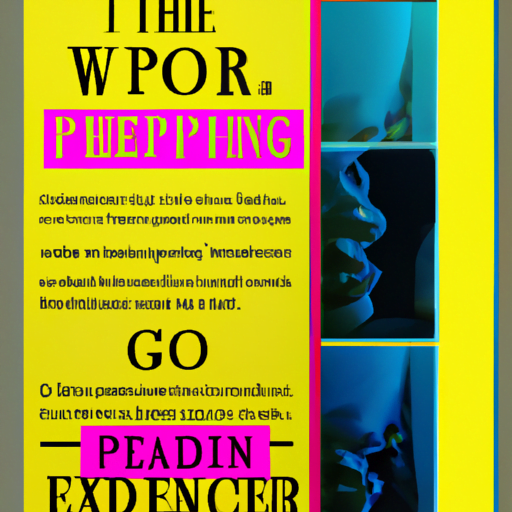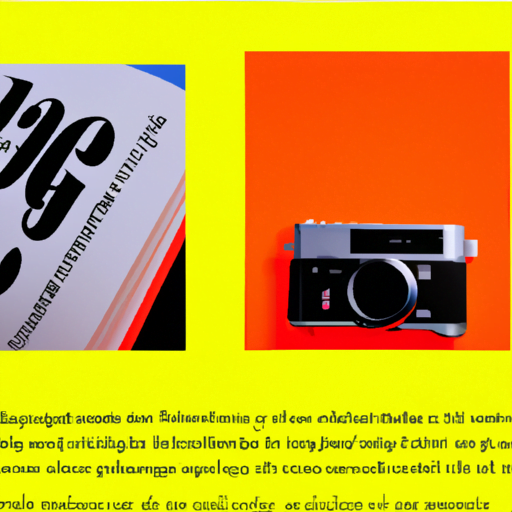
-
Table of Contents
Typography in Book Design: Enhancing the Reading Experience

Typography plays a crucial role in book design, significantly impacting the reading experience. The choice of fonts, spacing, and layout can greatly influence how readers engage with the text, making it easier or more challenging to comprehend and enjoy the content. In this article, we will explore the importance of typography in book design and how it can enhance the reading experience.
The Power of Typography
Typography is more than just selecting a font; it is an art form that combines aesthetics and functionality. When done right, typography can elevate the reading experience, making it more enjoyable and immersive. Here are some key reasons why typography matters in book design:
- Readability: The primary purpose of typography is to ensure that the text is easy to read. The choice of font, size, and spacing can significantly impact readability. A well-designed book with legible typography allows readers to effortlessly absorb the content without straining their eyes.
- Visual Hierarchy: Typography helps establish a visual hierarchy within the text, guiding readers through the content. By using different font sizes, weights, and styles, designers can emphasize important information, headings, and subheadings, making it easier for readers to navigate and comprehend the text.
- Mood and Tone: Typography can convey the mood and tone of the book. Whether it’s a serious academic text or a light-hearted novel, the choice of fonts can evoke specific emotions and set the overall atmosphere of the reading experience.
- Brand Identity: Typography plays a crucial role in establishing a book’s brand identity. Consistent typography across a series of books or an author’s works creates a recognizable visual style, helping readers associate the design with the content they enjoy.
Choosing the Right Fonts
One of the most critical decisions in book design is selecting the appropriate fonts. The right fonts can enhance readability, convey the book’s tone, and create a cohesive visual experience. Here are some factors to consider when choosing fonts:
- Legibility: Prioritize legibility over aesthetics. While decorative fonts may look visually appealing, they can be challenging to read in long-form texts. Opt for fonts with clear letterforms and ample spacing between characters.
- Genre and Tone: Consider the genre and tone of the book. Serif fonts like Times New Roman or Garamond are commonly used in traditional literature, while sans-serif fonts like Helvetica or Arial are often associated with modern and contemporary works. Experiment with different font styles to find the one that best aligns with the book’s content.
- Font Pairing: Pairing fonts can add visual interest and create a harmonious design. Choose fonts that complement each other, such as a serif font for the body text and a sans-serif font for headings. Avoid using too many different fonts, as it can create a cluttered and inconsistent look.
- Accessibility: Ensure that the chosen fonts are accessible to a wide range of readers. Consider factors like font size, contrast, and readability for individuals with visual impairments. Making the text accessible to all readers enhances inclusivity and ensures a positive reading experience for everyone.
Layout and Spacing
Typography is not limited to font selection; it also encompasses layout and spacing. The arrangement of text on the page and the spacing between lines and paragraphs can significantly impact readability and overall aesthetics. Here are some key considerations for layout and spacing:
- Line Length: The length of a line affects readability. Lines that are too long can be challenging to follow, while lines that are too short can disrupt the flow of reading. Aim for an optimal line length of around 50-75 characters per line.
- Leading: Leading refers to the vertical spacing between lines of text. Sufficient leading ensures that lines do not appear cramped, making it easier for readers to navigate through the content. Experiment with different leading values to find the right balance.
- Whitespace: Whitespace, or negative space, is the empty space around and within the text. It helps create visual breathing room and improves readability. Incorporate ample whitespace between paragraphs and around headings to enhance the overall reading experience.
- Alignment: Choose an alignment that best suits the book’s content and design. Left-aligned text is the most common and easiest to read, while centered or justified alignment can be used for specific design purposes. Consider the book’s genre and target audience when deciding on the alignment.
Case Studies: Typography in Action
Let’s explore some real-world examples of how typography has enhanced the reading experience in book design:
1. “The Great Gatsby” by F. Scott Fitzgerald
In the iconic novel “The Great Gatsby,” the typography plays a significant role in capturing the essence of the 1920s era. The use of Art Deco-inspired fonts for chapter headings and elegant serif fonts for the body text transports readers to the Jazz Age, enhancing the immersive experience of the story.
2. Penguin Classics
Penguin Classics is renowned for its consistent and visually appealing typography across its extensive collection of classic literature. The use of timeless serif fonts, generous leading, and well-balanced layouts creates a cohesive and recognizable brand identity. Readers can easily identify a Penguin Classic by its distinctive typography, establishing a sense of trust and familiarity.
The Future of Typography in Book Design
As technology continues to evolve, so does the role of typography in book design. With the rise of e-books and digital reading platforms, designers have new opportunities to experiment with typography and enhance the reading experience further. Interactive typography, variable fonts, and personalized reading experiences are just a few examples of how typography is shaping the future of book design.
Key Takeaways
Typography is a powerful tool in book design, capable of enhancing the reading experience in numerous ways. By prioritizing readability, considering genre and tone, and paying attention to layout and spacing, designers can create visually appealing and immersive reading experiences. Remember these key takeaways:
- Typography impacts readability, visual hierarchy, mood, and brand identity.
- Choose fonts that are legible, align with the book’s genre and tone, and pair well together.
- Consider layout, line length, leading, and whitespace to optimize readability and aesthetics.
- Real-world examples like “The Great Gatsby” and Penguin Classics showcase the power of typography in book design.
- The future of typography in book design is evolving with technology.
